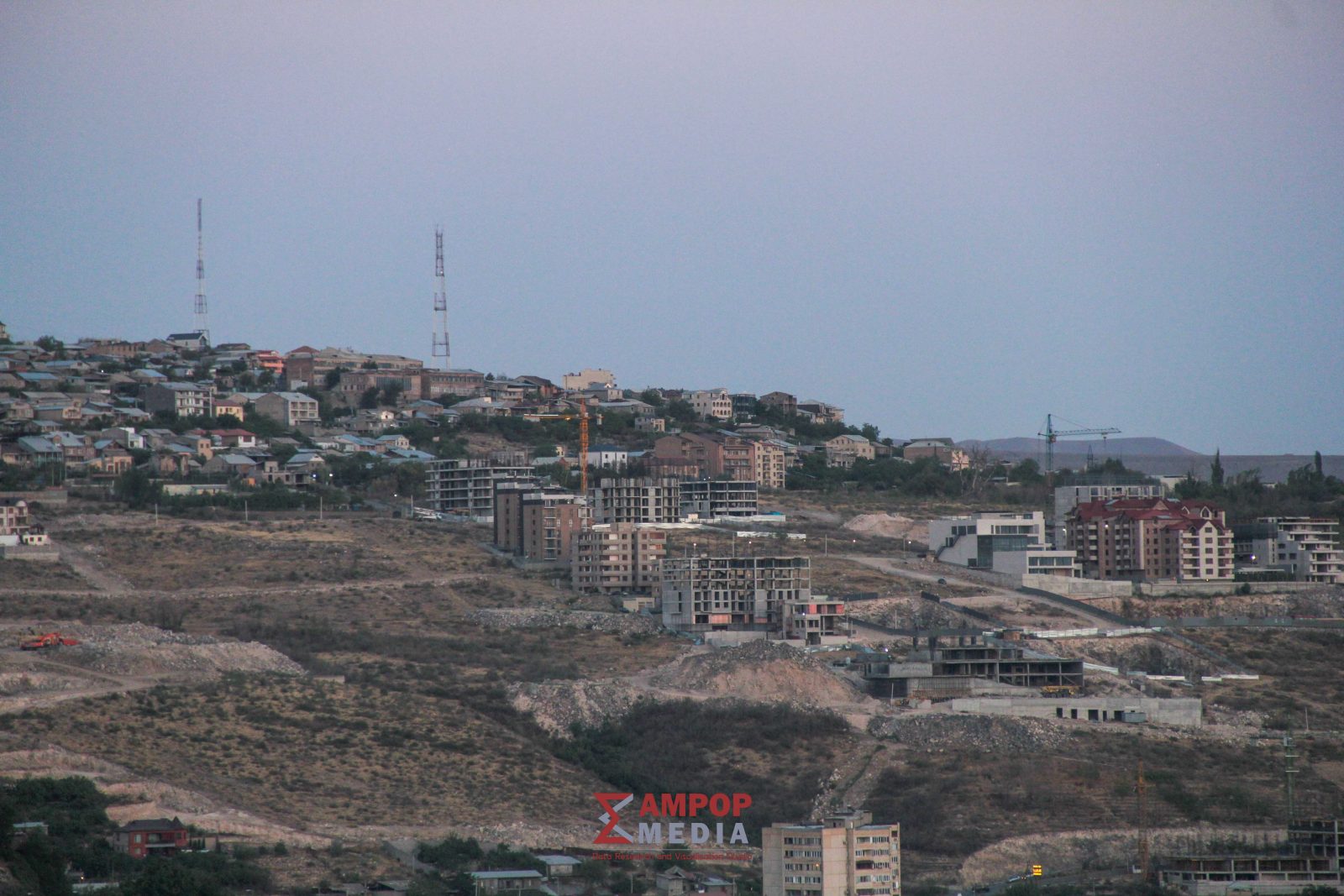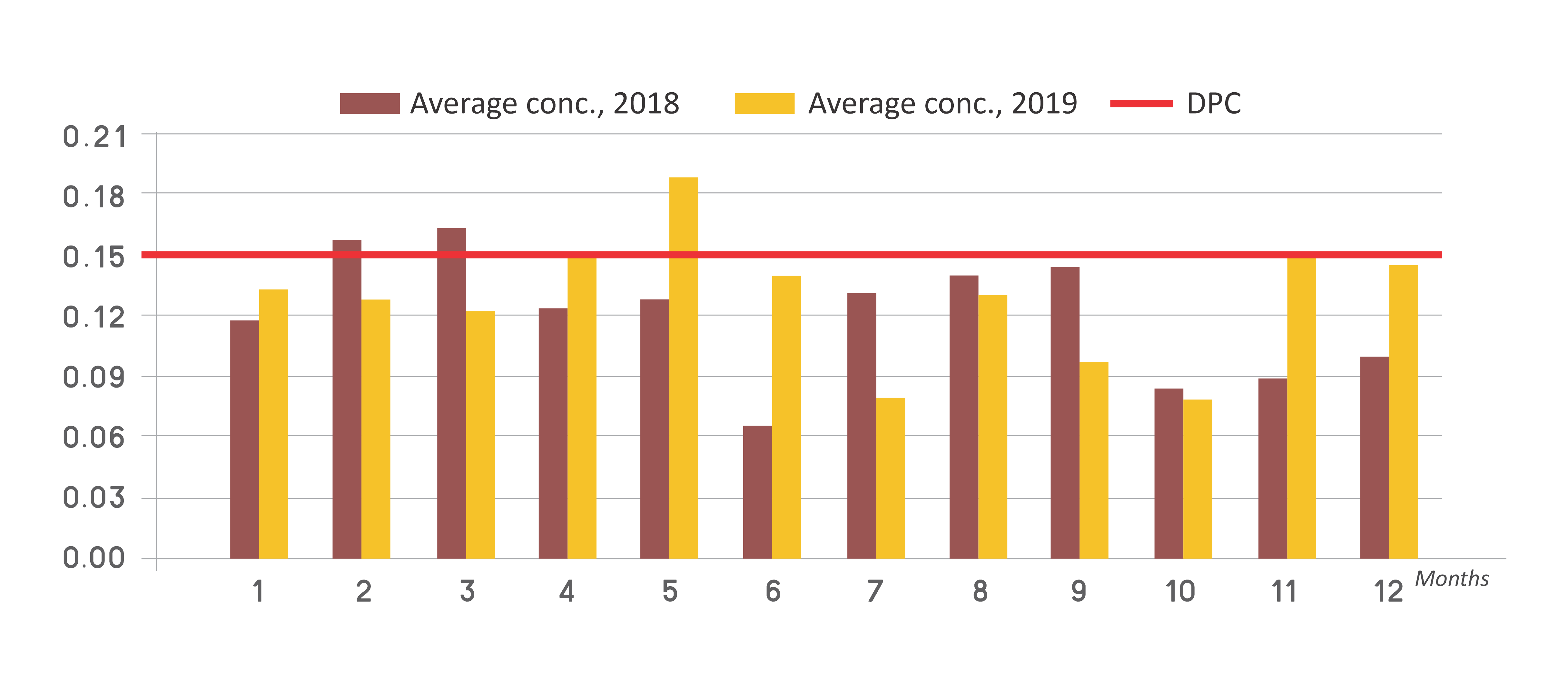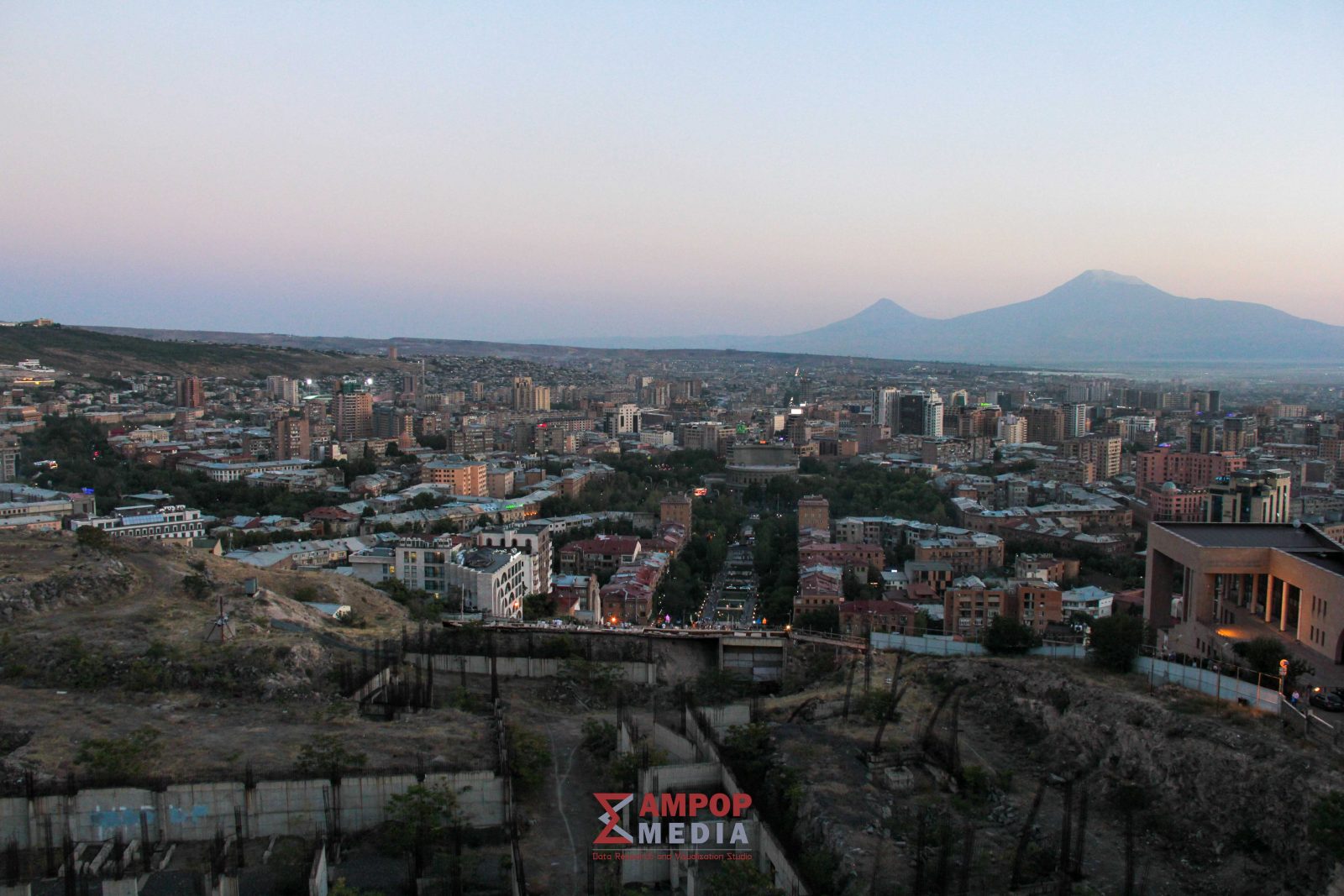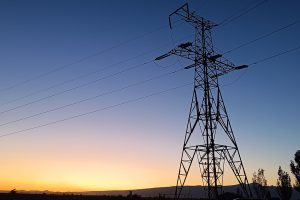About 30% of the capital, roughly 6,760 hectares, is covered in green spaces. If this sounds hard to believe, we share your skepticism, but these are the official statistics. This includes all the parks, gardens, and any place with grass or flowers in the city. This number encompasses all public and private green areas within the capital, as well as various forms of green vegetation cover, including flower beds and lawns. In essence, it includes any area adorned with greenery or flowers.
However, it’s more important to focus on the number of green areas with trees and foliage, as they are the ones producing oxygen and shielding the capital from dust.
Assuming the data is accurate, it’s important to note that it has remained consistent in publicly available documents since at least 2015. This includes documents like the city development plan and annual reports. It’s worth emphasizing this point, given that construction in the capital the scale of which is growing, and part of it, if not the bigger part, is being done at the expense of green areas.
A striking example of this trend is the green area at 6/1 Alikhanyan Brothers Street, which used to span approximately 2000 square meters. This area was previously part of the district commonly referred to as Physgorodok. However, starting in 2020, it was transformed into a construction site without the necessary permit from city authorities.
Although the protests of the district residents against the construction of 12-story buildings next to those with just 3 to 4 stories ended up with a criminal action against the constructors, it did not prevent the destroying of the green area and continuing the construction, causing numerous inconveniences to the residents.
Three years after the start of construction, in March 2023, the General Prosecutor’s Office of RA documented that there was an illegal expropriation, causing a large amount of damage to the state.
Read also: National security concerns due to skyscrapers towering in Yerevan. Part 1
Consequences
Until the 1990s, Yerevan’s main green spaces included the Norq forest, the Dalma gardens, and the thickets at Victory Park. However, these areas faced the effects of extensive logging during the energy crisis of the 90s, along with illegal land grabs and large-scale construction afterward. As a result, they lost their former significance. Today, only about half of the original 113 hectares of the Norq forest remain green, and even less of the Dalma gardens’ 700 hectares, with just 256 hectares still green.
Another fundamental green area of the capital is the Botanical Garden, with about 70% (56 000 sqm) of its territory requiring restoration.
It appears that the city today lacks natural green fencing to resist the wide-scale construction and the dust and winds resulting from the soil erosion, which is due to the lost coverage.
Over the five-year period from 2018 to 2022, there has been an increase in dust and nitrogen dioxide concentrations in the capital, particularly during certain months.
In July 2023, for example, the index of dust in Yerevan has exceeded the permitted concentration level by 1.2.
“Yerevan consistently tops international rankings for cities with the highest air pollution levels, often falling into the ‘red zone.’ According to these rankings, going outdoors in Yerevan without wearing a face mask poses a health risk, and engaging in sports and other outdoor activities is discouraged,” explained Lilit Sahakyan, the director of the eco-center at the National Academy of Sciences of Armenia, in an interview with Ampop Media.
Changes in average monthly concentrations of dust in the atmospheric air of Yerevan

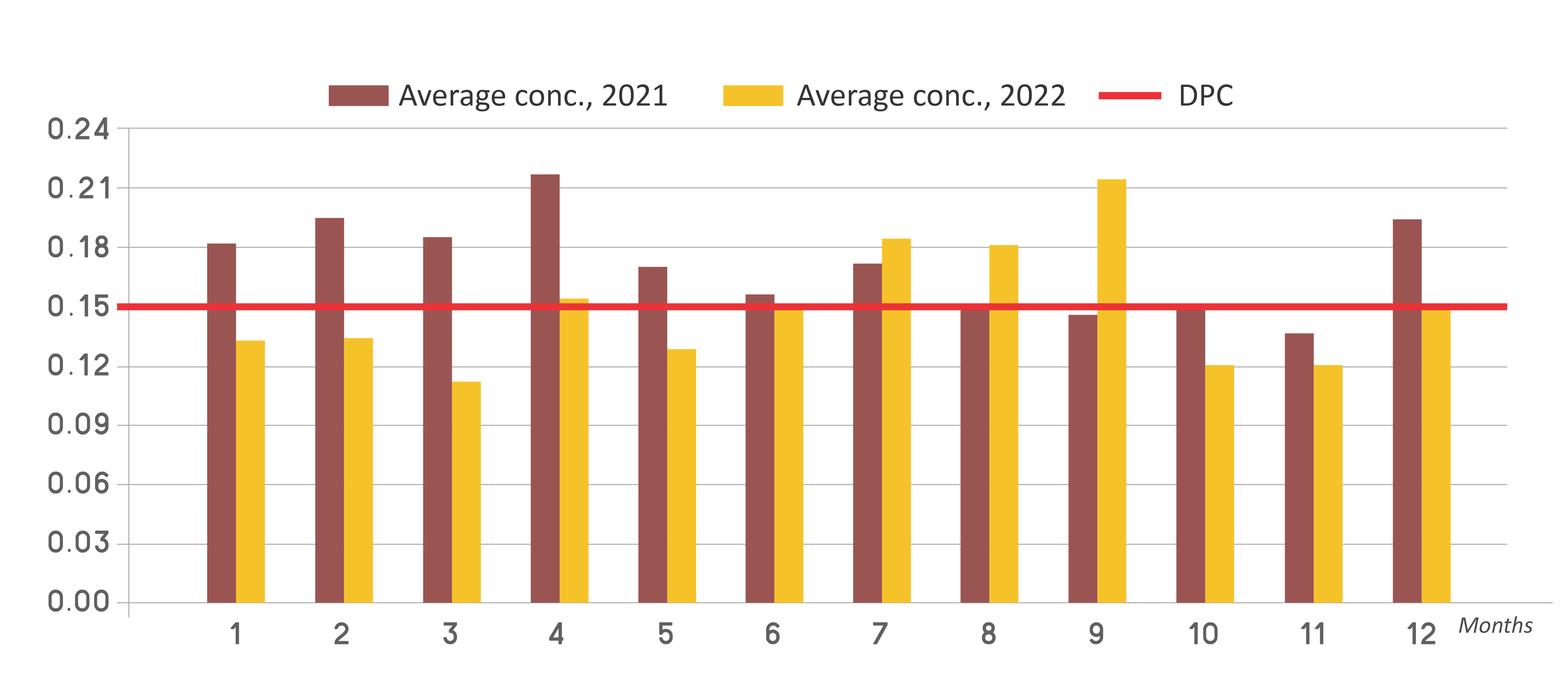 *Defined permitted concentration (DPC)
*Defined permitted concentration (DPC)
The action plan of the Green City Yerevan indicates that the city budget lacks sufficient funds to restore the green fencing (876 ha) around the city envisioned by the master plan of the capital. Besides, creation of nurseries for plants is impossible, because the land lots intended for them are no longer available, with some others being polluted or eroded.
So, it appears, on the one side, the city authorities lack the required means and resources to restore the green areas, and on the other hand, it gives green light to the construction of hundreds of multi-apartment residential blocks at the expense of the green areas.
According to the data available on the website of the Yerevan municipality currently there are 6545 construction permits granted, 65% of which are granted for the construction of residential houses. 575 of them are meant for brand new multi-apartment and multifunctional blocks and complexes.
Is there a demand and need for so many residential blocks in the capital, which occupied less than 1% of the country’s territory?
In the center of the capital, which seems to have no place left for new buildings, 376 (49%) of the total 726 permits have been granted for the construction, restoration or expansion of residential buildings.
With the current level of air and soil pollution in mind, experts say the municipal landscaping efforts are insufficient, and call the attempts to solve the problem by planting occasionally selected types of trees illogical.
“We are used to connecting the solution of problems with financing, but oftentimes it’s a matter of understanding with the lack of willingness to solve the problems and the incompetence adding to the situation,” Sahakyan says.
Lilit Sahakyan, who has been studying the geochemical problems in Yerevan for about 24 years, points to the vital importance of applying supervision mechanisms. “Let’s take a construction site, then it needs to be fenced tightly from all sides, or a mine, which has to be isolated during exploitation; the construction dust has to be settled by using water, and so on.”
The full interview with Lilit Sahakyan in Armenian is available in audio version
The problem of the city waste
The city waste is yet another serious environmental problem. The municipal authorities seem to be losing the battle here, too. Their approaches to the matter are limited to promises sounded during campaigns held ahead of local elections.
More than 300 thousand tons of waste are disposed at the waste dumps in the capital. The immense volumes of garbage accumulated throughout years regularly gets ignited and pollutes the air. The isolation or the recycling of the waste in the city’s largest dump in Nubarashen remains a promise.
Read Also: National security concerns due to skyscrapers towering in Yerevan. Part 2
Seismic safety
Armenia’s territory encompasses three zones of seismic hazard. Being the most densely populated settlement of the country, the capital is in the second most dangerous seismic zone in the republic.
“80% of the structures will collapse in case of an 8 or 9 magnitude earthquake in Yerevan; the death toll may reach 300 000, and there will be some 500 000 disabled people,” said seismologist, Doctor of Technical Sciences, Professor Mikayel Melkoumyan in an interview Ampop Media. Melkoumyan says the figures he presents are based on his and his colleagues’ research.
“We are located in a collision zone; the Arabian tectonic plate is in constant move to the north with 18 mm per year speed. That is a huge speed and pushing the Transcaucasia, it collides with the Eurasian plate. As a result, Turkey’s territory gets pushed to the sea,” Professor Melkoumyan says. He points that the region has and will always be seismically active. Therefore, it is fundamental to organize construction based on accurate calculations.
According to the portal Volcano Discovery, more than 61,000 tremors have been registered in the region in 2023, with 183 of them in the territory of Armenia [Editor’s note: Volcano Discovery provides regularly updated reports on natural disasters’ quantity, intensity and other details globally, based on academic and official information].
38 of the earthquakes registered in Armenia have had 3 to 5 magnitude.
The catastrophic consequences of the Spitak earthquake in 1988 have mostly been due to the poor calculations of seismic risks, Professor Melkoumyan says.
The only lesson learned from the Spitak disaster on state level has been the need to set new seismic norms
“I was part of the group of researchers that developed new normative documents for Armenia following the earthquake in Spitak; before the disaster, the seismic risks in our region were not properly calculated and the structures were mostly built with a 7-magnitude seismic resistance,” Melkoumyan points, adding that the norms are not always properly kept these days.
Professor insists corruption in the system does not let organize proper level of supervision in the sphere of construction.
The full interview with Prof. Melkoumyan in Armenian is available in audio version
“According to the norms passed in 2020 describe in detail the construction components; however, the corruption in the sphere of construction brings to violations. There is a map, which details the deterioration risks of buildings in Yerevan, yet no one takes that into consideration,” Melkoumyan alarms.
Professor Melkoumyan has sent numerous letters to respective bodies in attempts to draw attention to unacceptable violations, but those letters have remained unanswered.
Another factor complicating the problem and deepening concerns is the involvement of poorly qualified people in decision-making.
Melkoumyan says avoiding casualties and damage in the case of potential earthquake is possible. The reinforcement technology developed by Professor Melkoumyan lets separate the structure from its fundament and install seismic isolation system without evacuating residents. The method is applicable both to already completed buildings and those that yet to be erected.
In 2020, Mr. Melkoumyan sent his suggestion to the government, without any progress so far.
“I am all alone before the state system. They do not want to apply the technology I suggest, because it is 3 to 5 times more cost-effective compared to the old methods of reinforcement, and they fear to lose money going into their pockets…,” the professor says.
He assures the installation of a square meter of seismic isolation may cost about 40 USD and that the work will require some 3 to 5 months.
This is the third and the last part of the journalistic investigation about the construction industry in Yerevan despite the information retrieved while working on the project and the problems identified in the sphere are numerous.
In this series, we have tried to separate and showcase those major problems, which pose serious challenges to the safety of the country from demographic, healthcare, environmental, economic and seismic safety perspectives, as they bear the risks of ruining the system of the country’s security.
At the core of the problems remains administration lacking citizen-oriented vision and inefficient governance, which have resulted in the wide-scale residential construction centralized in the capital. And let the public, experts’ community and decision-makers draw own conclusions.
Project and story by Karine Darbinyan
Design by Anush Baghdasaryan
Data analysis and charts by Karine Darbinyan
Interviews by Lilit Poghosyan
Photos by Elen Mikayelyan
This multimedia project has been created as part of the project titled “The Link Between Housing Construction in Yerevan and Forced Migration Caused by the NK and Ukrainian Wars” which is supported by the ForSet Data Communication Fellowship Program.
© All the stories, infographics and other visuals bearing the Ampop Media logo is possible to publish on other audiovisual platforms only in case of an agreement reached with Ampop Media and/or JFF.
Փորձագետի կարծիք
First Published: 24/09/2023




